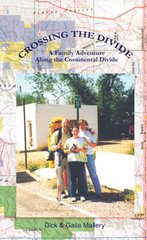
Continental Divide splits southwest of Rawlins and then rejoins northeast of Rawlins, creating the nearly circular Great Divide Basin where moisture that falls remains trapped and doesn’t drain to either the Pacific or Atlantic watersheds.
Wyoming’s Red Desert and the Pronghorn
Tucked away in southwestern Wyoming, the Red Desert remains one of the last high-desert ecosystems in North America. Long before the West was settled, the region played a significant role in the lives of native peoples, including the Shoshone and Ute tribes, and its unique features helped guide pioneers on their way to Oregon, California and Washington.
Now its rich landscape offers refuge to the pronghorn, the largest migratory herd in the lower 48 states, desert elk and many species of rare birds. However, this truly untamed region is under threat of oil and gas drilling.
The Bureau of Land Management (BLM), the federal agency responsible for safeguarding much of the lands and resources of the Red Desert, has proposed to increase oil and gas development in this region, threatening this wild landscape and its wildlife.
The Red Desert encompasses more than eight million acres of public lands that contain many unique things. Among its inhabitants are the world’s largest herd of desert elk, 50,000 pronghorn antelope, historic landmarks, rare plant species and primitive rock art.
The Red Desert is as wild and rugged as it was 150 years ago when the pioneers crossed it on the Oregon-Mormon Trail. In those days, this harsh land provided the easiest path over the Continental Divide. Easiest, but not easy. Many pioneers lost their lives during the crossing, and today the area remains sparsely populated because of its severe climate, sparse moisture and barren landscape.
The CDT is becoming very well marked around the basin. I went straight across (Blue Line). I bushwhacked from Battle Pass to Wamsutter which is all sagebrush and little water. From Wamsutter I went straight across the Basin to the Sweetwater River, South Pass City. I found more water sources in the Basin than I did getting from Battle Pass to Wamsutter. The southern part of the Basin has a lot of oil/gas activity. There is water at Hay Reservoir and I found Scotty’s Lake to contain potable water. I thought it would be saline but it was not. I also came across a couple flowing wells on the north end of the basin where cattle were congregating. I would still suggest carrying a couple gallons and walking long mileage days to make the crossing a three day event.












No comments:
Post a Comment